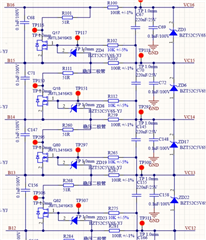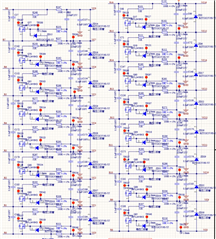Tool/software:
Dear Expert
I would like to inquire about the balancing issue of BQ76952. When fully connected to 16 battery cells, the following phenomena occur in balancing:
① Simultaneously activate odd numbered strings 1, 3, 5, 7, 9, 11, 13, 15, and 8. The hardware measured that the 15th string equalization was not turned on and the current did not rise, but the software read that the equalization status was turned on;
② Simultaneously open 2, 4, 6, 8, 10, 12, 14, 16, and 8 even numbered strings. The hardware measured that the 16th string equalization was not turned on and the current did not rise, but the software read that the equalization status was turned on;
③ Simultaneously opening the 1, 3, 5, 7, 9, 11, 13, 16, and 8 battery cells, the hardware measured that the 13th equalization was not turned on, and the 16th equalization was turned on again, but the software read that the equalization status was turned on;
④ Simultaneously enabling odd numbered strings 9, 11, 13, and 15, the hardware tested that the 15th string equalization was not turned on, but when changed to 9, 11, 13, and 16 strings, they can all be turned on again;
⑤ Only the first 6 odd or even strings can be opened, but when switching to the last 6 strings, the last one cannot be opened
⑥ In the case of opening 3 strings, any combination of odd or even strings can be opened;
It is understood that there is no such phenomenon when 16 strings are not fully connected, such as 12 or 14 strings. May I ask if it is related to the number of connected battery cells or where software configuration is needed? Currently, no relevant description can be found in the manual. Please reply promptly. Thank you very much.




